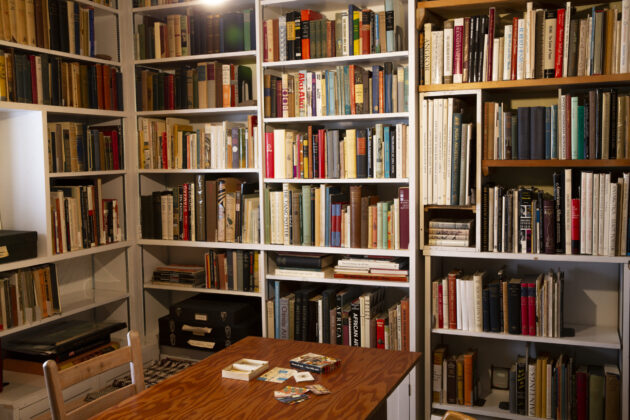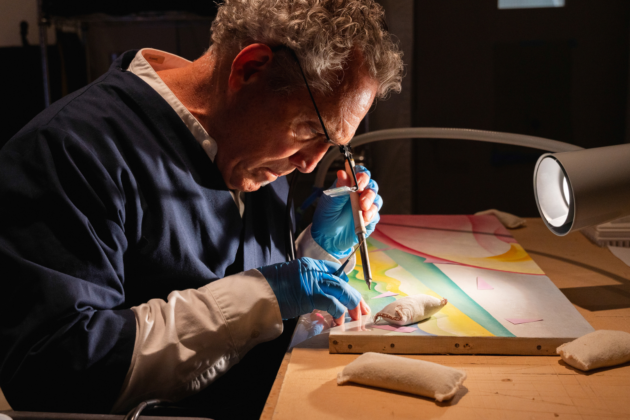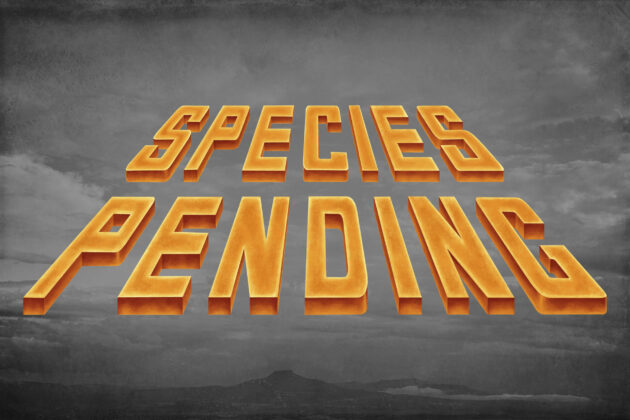
Part I: Questions from the Surface
“Miss O’Keeffe’s Bones,” or What Became of Them [1]
I landed in Santa Fe in early June, sight unseen, making my way from Austin to spend the summer interning for Cody Hartley in the curatorial department. I had just finished my Master’s Degree in art history at UT, and was enthusiastic to jump into a creative and imaginative historic world—an endeavor that, for me, brings giddy joy, like embracing a new circle of friends. Admittedly, I never had much of a framework for O’Keeffe’s work in my mind, which inhibited the extent I felt comfortable reading it. Was she purely a Stieglitz Circle Modernist? A Magical Realist? An American Surrealist? An Expressionist? A Regionalist? A flower painter? A “Woman Artist?” I truly wasn’t sure, and I felt like I only knew how not to read her work. As a student of art history, I learned that the gendered, pseudo-psychoanalytic lens that a small group of writers established for her paintings in the teens is, for lack of a better phrase, a “No-no.” You can criticize that lens, but you don’t apply it. As such, I suspected that this lens was but a small fraction of the story that comprised O’Keeffe’s reception over the five most active decades of her career. Considerations of gender and sexuality are important today, but were they topics for every single pundit, historically speaking? What were the other questions critics asked of her work over the decades? And I wonder, for those voices that did find in her flowers and skulls the representation of “unconscious feminine desire,” or did consider her work female by nature— how come? What were those critics and historians using O’Keeffe’s work to say about the role of the artist and artistic practice?
O’Keeffe’s career lines up with some of the most intense and polemical years of art criticism and production in American history. Where do critics position her in this landscape? Accordingly, how do readings of her work shift over these years and, more interestingly, how do they remain the same? I won’t be able to answer all of these questions in this post, but over the course of some three blogs I’ll focus on two examples— one from 1943 and the other 1967— where magazines presented intriguing readings of her and her pictures. One of the authors removes her entirely from the art world; the other designates her as the mother of American art. It would be interesting to think more about what was at stake for these two authors. Generally speaking, what can we learn from thinking more fully about the commentators who spent years, sometimes decades, exalting and indeed defining O’Keeffe’s image?

These questions congealed in my brain over the course of my first weeks in Santa Fe, as I stood at the precipice of a reservoir—one with lots of fish and algae, some very deep and hard to identify, others undulating toward the surface, more clearly visible. I can’t really dive in to swim with them, to feel their scales, interject in their quarrels or affairs. But I can get in my submarine – unnamed as of yet – and sink to the bottom, slowly, over the course of time, watching the world unfold from my historically separate vantage point, drifting deeper and deeper into murky and aquatic terrain, my curiosities vaguely revealing themselves.
This post was written by Thomas Edwards, Curatorial Intern, Marsh Family Fellow, Georgia O’Keeffe Museum
The feature image is a group of magazine and newspaper features composited by the author, including American Artist (June 1943), Town and Country (January 1943), House Beautiful (April 1963), and Vogue 149 (March 1, 1967).
The second image is a drawing of O’Keeffe by an unknown artist, which appeared on page 18 of The New Yorker, April 11, 1925.
[1] The quoted portion of this title is taken from Henry McBride’s review of O’Keeffe’s show at An American Place, which appeared in The New York Sun, January 18th, 1944.


